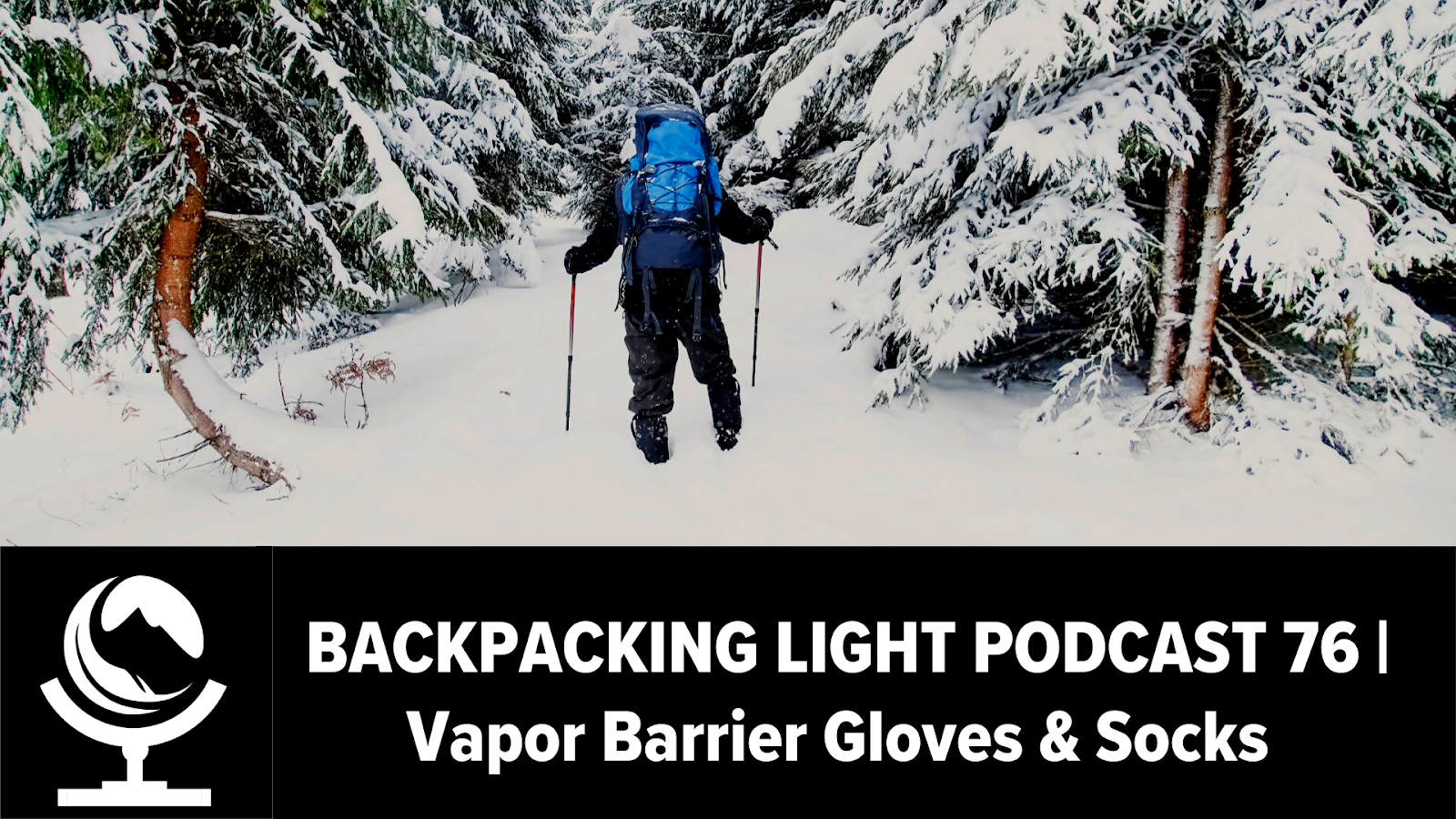Episode 76 | Vapor Barrier Gloves and Socks
Episode Summary
In today's episode of the Backpacking Light podcast, we are going to explore vapor barrier systems for the hands and feet.
Listen
Summary
In today’s episode of the Backpacking Light podcast, we are going to explore vapor barrier systems for the hands and feet.

In this Episode:
- What is a Vapor Barrier?
- What does a Vapor Barrier do?
- Insensible vs. Sensible Perspiration – activity vs. non-activity
- Vapor Barrier Performance vs. Ambient Temperature
- Challenges of Keeping Hands and Feet Warm
- Vapor Barrier Layering Systems
- Examples
- Ryan’s Systems
- Disclaimer: The Risk of WPB and Vapor Barrier Handwear Systems in Extreme Cold
Links, Mentions, and Recommendations
- Webinar: Winter Hiking & Backpacking Gear Part 1
- Webinar: Winter Hiking & Backpacking Gear Part 2
- Webinar: Avalanche Safety Webinar
- Podcast: Winter Layering for the Legs
- Podcast: Shelter Stakes for Winter Camping
- Podcast: Avalanche Awareness Podcast
- Trailhead: Winter Backpacking
- Gear: Stephenson’s Warmlite Vapor Barrier Gloves
- Gear: RBH Designs Vapor Barrier Gloves
- Gear: Rab VB Socks (at Feathered Friends)
- Gear: Stephenson’s Warmlite Vapor Barrier Socks
- Gear: RBH Designs Vapor Barrier Socks
- Gear: Exped Vapor Barrier Socks
- Gear: Rocky Goretex Socks
- Gear Guide: Ultralight Shell Mitts
How to Subscribe
- Apple Podcasts | Spotify | RSS
More Episodes
Credits
- Executive Producer - Backpacking Light; Show Director and Host - Ryan Jordan; Producer - Chase Jordan; Theme music: Look for Me in the Mountains written by Chris Cunningham and Ryan Jordan, performed by Chris Cunningham (acoustic guitar, lead and harmony vocals, harmonica), Chad Langford (upright bass), and Tom Murphy (mandolin), produced by Basecamp Studios in Bozeman, Montana.
Feedback / Tips / Questions
More Backpacking Light
- Sign up for the Newsletter.
- Become a Backpacking Light Member.
- Follow us elsewhere on the web: YouTube | Instagram | Facebook
Disclosure
- Sponsorship Policy: Backpacking Light does not accept compensation or donated/discounted products in exchange for product mentions or placements in editorial coverage, including any podcast episode content not excplicitly identified as sponsored content.
- Some (but not all) of the links in these show notes may be affiliate links. If you click on one of these links and visit one of our affiliate partners (usually a retailer site), and subsequently place an order with that retailer, we receive a commission on your entire order, which varies between 3% and 15% of the purchase price. Affiliate commissions represent less than 15% of Backpacking Light's gross revenue. More than 70% of our revenue comes from Membership Fees. So if you'd really like to support our work, don't buy gear you don't need - support our consumer advocacy work and become a Member instead.
- Learn more about affiliate commissions, influencer marketing, and our consumer advocacy work by reading our article Stop wasting money on gear.




Home › Forums › Episode 76 | Vapor Barrier Gloves and Socks